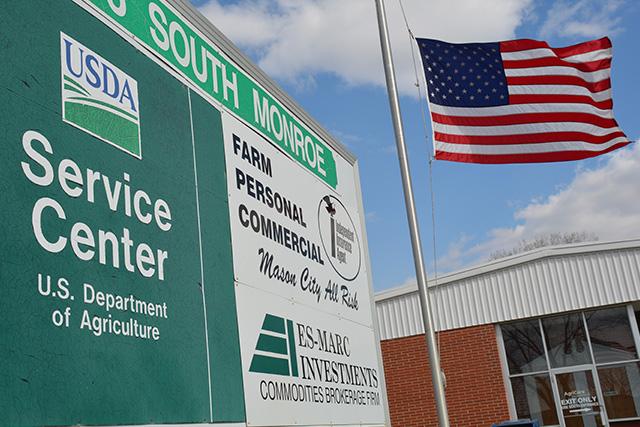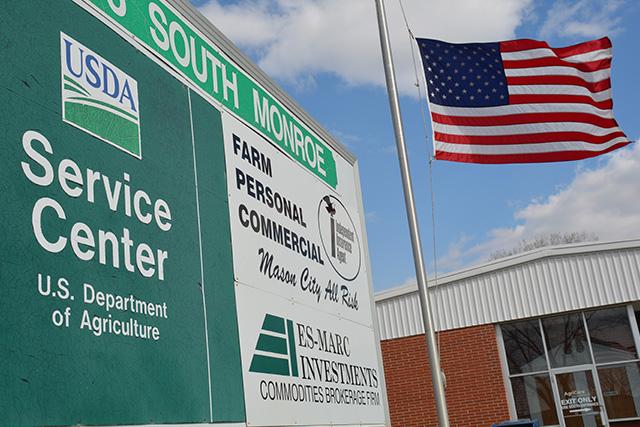Ag Policy Blog
ARC and PLC Enrollment is Open, But Price Changes Offer More Options to Weigh
OMAHA (DTN)-- USDA has opened enrollment for Agricultural Risk Coverage (ARC) and Price Loss Coverage (PLC) for the 2024 crop year, but that doesn't mean farmers should force themselves into making a quick call on ARC and PLC.
Decisions for the 2024 crop year are going to look a little different for ARC and PLC than in the past because the escalator for the effective reference price finally kicks in.
The signup is starting later than normal because the 2018 farm bill was in limbo until Congress extended programs to Sept. 30, 2024, then USDA had to get its ducks in a row.
Farm Service Administrator (FSA) Zach Ducheneaux stated in a news release that farmers should "avoid the rush" and contact their local FSA offices for an appointment to enroll. Even if you do not change your program selections, you still need to sign a contract.
NOT SO FAST, MY FRIENDS
Farmers might want to hold back from rushing out to the FSA office for just a bit. The enrollment deadline for ARC-PLC is March 15, 2024. That's also the same day farmers in a large swath of the country must lock in their crop insurance plans for the year as well.
The odd thing about USDA's press release telling everyone that enrollment is open is that no mention was made about changes in the ARC benchmark prices or PLC effective reference prices for the 2024 enrollment. USDA's enrollment notice to state and county offices also does not mention any adjustments to ARC or PLC reference prices as well.
A fact sheet on the USDA ARC-PLC website notes changes to the reference prices, but they are not published. "Under the 2018 Farm Bill amendments, effective reference prices will be calculated to allow upward fluctuation of reference prices in time periods when historic price averages are higher than the established reference price for the covered commodity."
Clear as mud, right?
EFFECTIVE REFERENCE PRICE CHANGES
P[L1] D[0x0] M[300x250] OOP[F] ADUNIT[] T[]
The 2018 farm bill tweaked ARC-PLC with an effective reference price meant to adjust upward with certain market conditions. Basically, reference prices could move upward if market year prices were higher for the most recent five crop years based on the ARC-County formula tied to an 85% Olympic average -- three of the five previous years of market prices are averaged with the highs and the lows kicked out, then multiplied by 85%. One more caveat caps any price swing at 115% of the statutory reference price.
Under that scenario, the effective reference price looks like:
-- Corn is projected to move upward from $3.70 a bushel to $4.01 a bushel.
-- Soybeans would move from $8.40 a bushel to $9.26 a bushel.
-- Wheat would remain with the 2018 reference price of $5.50 a bushel. Wheat prices are held back by a three-year stretch from 2018-2020 when the market-year average prices all came in at $5.16 a bushel or lower.
Those are just the prices for three of the 22 commodities eligible for ARC/PLC, but they could change the dynamics of a producer's enrollment in those programs and crop insurance.
SEE WHAT AG ECON GUYS HAVE TO SAY
ARC-County also relies on county yields by comparing the benchmark revenue to county yields on base acres and the market-year average price.
Given that we're deep into the holiday season right now, farmers should at least wait until they see some analysis on ARC-PLC decisions from the agricultural economic folks at their respective land-grant university agricultural economic number crunchers at places such as the University of Illinois, K-State, Iowa State, Texas A&M, etc.
SCO/STAX CONSIDERATIONS
Another consideration for producers is that they cannot buy Supplemental Coverage Option (SCO) insurance on any farm in which they have signed up for ARC-County -- the main ARC program. For farmers with cotton seed base, if they participate in ARC or PLC then they cannot buy Stacked Income Protection Program (STAX) coverage on that farm.
SCO and STAX policies do not pay out until the Risk Management Agency (RMA) publishes actual county yields, so those policies are always delayed by several months. So far, no payouts are reported for 2023.
But looking at RMA data for the 2022 crop year, producers in all commodities bought 56,375 SCO-Revenue Protection policies covering nearly 13.6 million acres. The overall farmer premiums came out at $217.9 million (excluding the subsidy) and the indemnity payout came in at $183.5 million.
In STAX-RP, there were 24,973 policies sold in 2022 on 6.8 million acres. They had a producer premium of $375.2 million but had an insurance payout of $762.5 million.
To put the STAX payout into context, the entire ARC-County payout for the 2022 crop year involving 22 crops was $267 million. PLC did not trigger a payout for 2022. Yet, cotton-seed producers in Texas were among the biggest beneficiaries of ARC-County payouts for the 2022 crop year as well.
While farmers cannot buy SCO if they are enrolled in ARC, they can purchase Enhanced Coverage Option (ECO) regardless of their ARC/PLC decision. Looking again at the 2022 crop year, insurers sold more than 29,800 ECO policies covering nearly 8.2 million acres. Producers paid $125.5 million in premiums, but the indemnity payout was nearly $124.4 million.
Also see FarmDoc Daily "2023 and 2024 Effective Reference Prices and the Next Farm Bill," https://farmdocdaily.illinois.edu/….
Chris Clayton can be reached at Chris.Clayton@dtn.com.
Follow him on X, formerly known as Twitter, @ChrisClaytonDTN.
(c) Copyright 2023 DTN, LLC. All rights reserved.






Comments
To comment, please Log In or Join our Community .